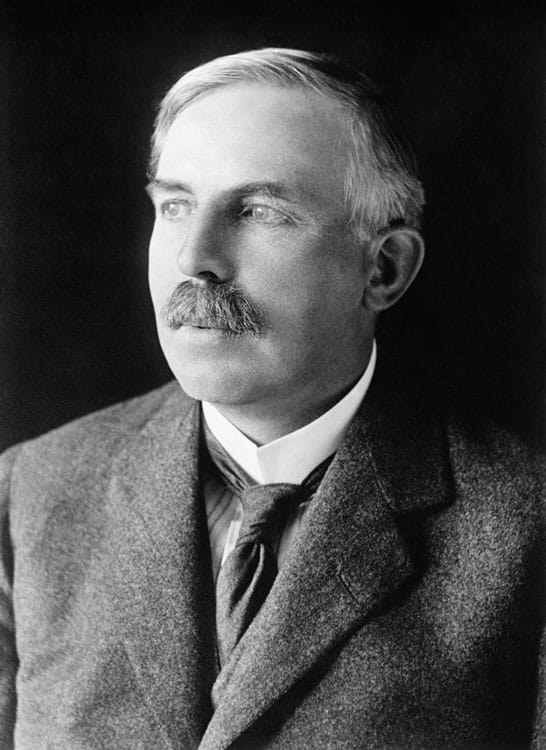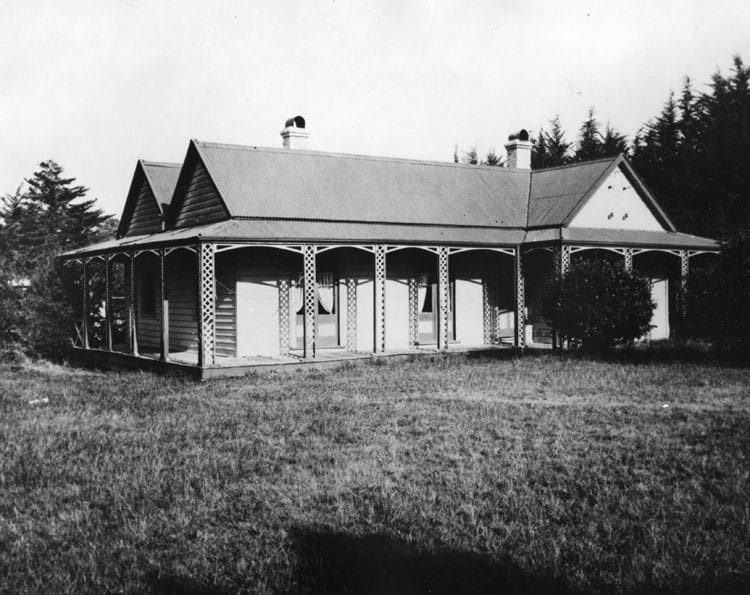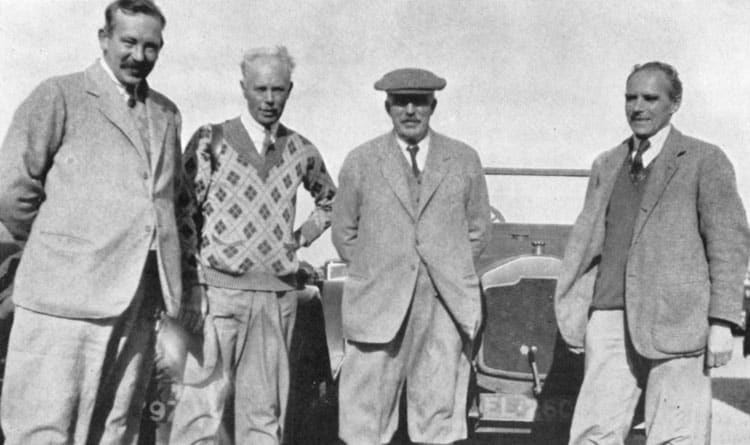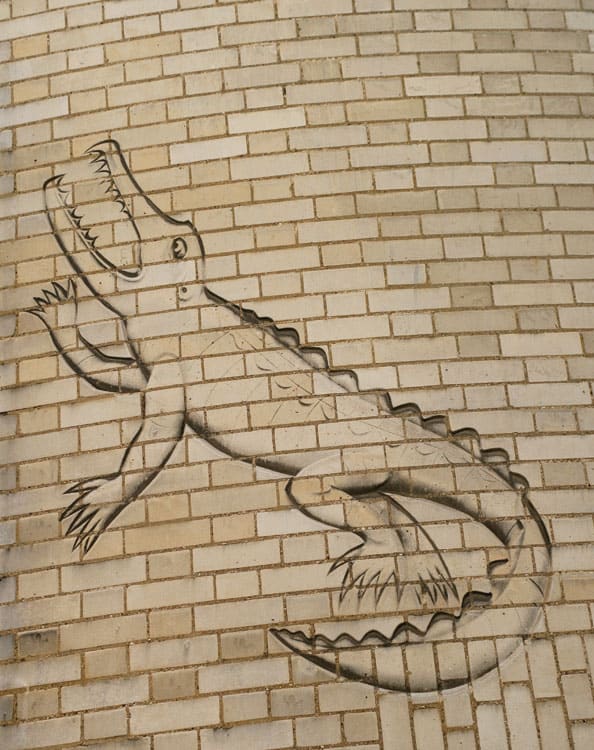A century ago, Ernest Rutherford influenced much more than our understanding of the atom. James Poskett reflects on Rutherford and the rise of international science

You wake up with an extreme pain in your stomach. Something is seriously wrong. After a fit of vomiting, you are rushed to the nearest medical clinic and, naturally, expect the best doctor straight on the scene. This is what happened to Ernest Rutherford on the night of Thursday 14 October 1937. But Rutherford, by then Lord Rutherford of Nelson, was in the unusual position of having risen so high up within the British establishment that the doctors could not touch him. He lay there in intense pain with a strangulated umbilical hernia, waiting for medical treatment despite being surrounded by some of the country’s best doctors. Why? Because as late as the 1930s, British peerage protocol dictated that only a titled surgeon could operate on a lord. The doctors at the Evelyn Nursing Home in Cambridge could do nothing but wait for the arrival of the knighted surgeon Sir Thomas Dunhill, travelling all the way from Harley Street in London.
The delay cost Rutherford his life. Dunhill arrived in Cambridge but was only able to perform the operation on Friday evening. Despite initial optimism, it was too late: the hernia, having cut off the blood supply to Rutherford’s bowel, ultimately proved fatal. The tissue death and shock of surgery were too much, and he died on 19 October 1937 aged 66.
The human details of this story are of course tragic and Rutherford’s death was mourned across the world. From his former student Pyotr Kapitsa in Russia to the prime minister of New Zealand, the international community was shocked and saddened by the death of this Nobel-prize-winning physicist. Indeed, this far-reaching reaction reflects one particular aspect of Rutherford’s life: that of an international scientist.
Lord Rutherford of Nelson was not born into a world of peerage protocol and titled surgeons. In fact, he was born, thousands of miles from his deathbed, into a very humble farming family in New Zealand. Yet he became the first person born outside of Britain to be interred at Westminster Abbey. This New Zealand boy, who used to milk cattle and dig potatoes for his parents, lies next to two titans of British science: Charles Darwin and Isaac Newton. Such recognition is a sign of how, at the start of the 20th century, science was becoming an increasingly global enterprise.
Following his death, Rutherford’s greatest scientific legacy was undoubtedly that of nuclear physics. In fact, this year marks the centenary of Rutherford’s announcement of the structure of the atom: that now-familiar model of a central positive nucleus surrounded by negative electrons. The birth of nuclear physics paved the way for “big science”, which we traditionally associate with enormously expensive projects such as the Large Hadron Collider or the development of nuclear weapons like those that came out of the Manhattan Project in the 1940s. However, it is also worth remembering the international collaborative world that big science came to nurture. Rutherford’s life and work is a testament to this. In fact, the very title that contributed to his death (“of Nelson”) is a reference to his home province of Nelson, New Zealand. It therefore seems fitting, in this anniversary year, to celebrate the global aspects of Rutherford’s life and work.
The highlights of Rutherford’s scientific career are easy enough to state. It began in Cambridge, where he arrived as a 23-year-old graduate research student in 1895, famously finding that radioactivity consisted of two types of rays that he named alpha and beta. Three years later he moved to McGill University in Montreal, Canada, where he developed the concept of a radioactive half-life, before moving back to Britain in 1907, to Manchester. It was here that Rutherford developed his eponymous model of the atom. But these bald facts miss the relevance, both scientifically and personally, of Rutherford’s origins in New Zealand.
No more potatoes
Born in Foxhill near Nelson on the South Island of New Zealand on 30 August 1871, Ernest was one of 12 children. Later, as Lord Rutherford, he would say that if he had not been a scientist, he would have been a farmer. He spent his early days chopping wood and shooting pigeons in the bush. It is unlikely that Rutherford’s experience on the farm influenced his later scientific discoveries (although he did experiment with a homemade camera and model watermill while a young boy). But nonetheless, his early academic work in New Zealand clearly had a great impact on his life.
By 1893 Rutherford had already earned two degrees: a BA and MA from Canterbury College in Christchurch, New Zealand, and, perhaps not quite ready to leave higher education, he began a BSc at the same institution the following year. As part of the BSc he began investigating the hottest topic of the moment: electromagnetic waves. Rutherford conducted his early research in a cold underground cellar lovingly referred to as “the den”. His other research lab (if you can call it that) was a narrow room dubbed “the shed”. In this dingy corridor, Rutherford transmitted and detected electromagnetic waves using coils of magnetized iron wire. (He would later repeat and develop these experiments, transmitting signals between the lofty spires of Cambridge colleges.) Despite the somewhat grim setting, Rutherford was developing into a keen researcher and later that year published his first research paper.
Rutherford certainly proved himself an impressive young experimentalist in New Zealand. That in itself might not seem so special, but thousands of miles away in England, impressive young researchers were hard to come by. Particularly in Cambridge, an extreme emphasis on formalized teaching and examination had led to a lack of practical research skills (arguably a worry for students and academics even today). In an effort to remedy this, the Royal Society in London offered scholarships to recruit researchers from all over the world, using the proceeds of the 1851 Great Exhibition of Nations. In these, we see the beginnings of truly international science.
Rutherford applied for a scholarship but ended up enduring an agonizing wait to hear of his success. Another candidate from Auckland University College had been nominated but, thankfully for science, pulled out after receiving an attractive job offer. (That or he bottled at the idea of an 11,000-mile journey.) Rutherford was at home when he received the news, digging potatoes for his mother. She rushed out to tell him and, on doing so, Rutherford reportedly quipped “That’s the last potato I’ll ever dig.”
Rutherford was able to avoid the tough farming life his family had been used to, but he was not without worries. Amusingly, Rutherford’s immediate concern upon his acceptance to Cambridge was that his new tutors might be old fuddy-duddies, referring to them as “fossilized”. As if to confirm his suspicions, J J Thomson, head of the Cavendish Laboratory at the time, invited Rutherford for a game of golf soon after his arrival. In a letter to his New Zealand fiancée Mary Newton, whom he would later marry in 1900, Rutherford revealed his private misgivings about the new world in which he came to inhabit: “I don’t think, however, I am quite old enough for golf yet – at any rate to take it up with much enthusiasm.”
Of course, part of international science is dealing with such a clash of cultures. At first, Rutherford found things difficult. Other than trying to avoid becoming a fossilized professor, Rutherford sensed that not everyone he encountered at the Cavendish welcomed him, writing that “There is one demonstrator on whose chest I would like to dance a Maori war-dance.” Thankfully, Rutherford refrained from foot-stomping and soon got into the swing of things. Indeed, he later played golf regularly with his Cambridge chums, as part of what was loosely known as the “Trinity Circus”, reportedly with a great sense of humour (Physics World January 2006 p48, print edition only). In fact, during one round in the 1920s, Rutherford grew impatient waiting for physicist Ralph Fowler to line up his shot. Rutherford just could not resist and shouted “Get on, get on, correct to 1 in 1000!”
Science without borders
Over the next 30 years Rutherford enjoyed a truly distinguished career. He achieved a Nobel Prize for Chemistry (despite having famously stated that “all science is either physics or stamp collecting”), a knighthood, a peerage and presidency of the Royal Society (Physics World September 1998 pp35–40). Despite all this, it is arguably Rutherford’s students – including Hans Geiger of Germany and Niels Bohr of Denmark – who represent his greatest legacy, particularly in terms of international “big science”.
On Rutherford’s arrival at Cambridge in 1895, he was one of the first international graduate students at the university. By the time of his death, Rutherford had both taught and helped to develop students from all over the world, clearly conscious of the value of such an enterprise. In fact, as a fellow and later president of the Royal Society, Rutherford sat on the very committee awarding the 1851 Scholarships. Whenever anyone challenged the value of the scholarships, Rutherford was ready with what must have been the ultimate comeback: “You might remember that if there hadn’t been any overseas scholarships, you wouldn’t have had any Rutherford.” Through overseas scholarships the scientific community was able to draw on a new and diverse set of talent: those with a different outlook and a variety of research experience.
Rutherford’s favourite student is perhaps the best example of this. Pyotr Kapitsa (see right), like Rutherford, had enjoyed (and suffered) a life before coming to Cambridge. Kapitsa had trained as an engineer at the Polytechnic Institute in St Petersburg but in the early 1920s his wife and children had died in the midst of an influenza epidemic. In an attempt to get over his grief, Kapitsa left Russia as part of a scientific and trade mission, and in 1921 he arrived at the Cavendish Laboratory in Cambridge, of which Rutherford was now head, having returned there from Manchester in 1919.
It is worth remembering that, although Rutherford agreed to have Kapitsa conduct research at the Cavendish, he was still a bit suspicious of the Russian. Luckily, he did not dwell on this too much and simply told Kapitsa that “communist propaganda” would not be tolerated. (To be fair to Rutherford, it is now well documented that part of the mission to which Kapitsa was attached focused on promoting Soviet science policy – still, “propaganda” might have been a bit harsh.)
In any case, Kapitsa began work on observing alpha and beta particles, and in particular developed the use of electromagnets to alter their paths. But what Rutherford really liked about Kapitsa was his engineering background, later commenting that Kapitsa “had the brain of a physicist and the ability of a mechanic”. Then, as now, budgets were tight, and Kapitsa’s engineering and technical experience helped him to develop a method for experimenting with electromagnetic fields lasting only a fraction of a second. Prior to Kapitsa’s work, electromagnets would have to be left to reach a steady state, consuming energy and generating massive amounts of heat.
Kapitsa and the Kremlin
Now, you do not have to be born and raised in Russia to be a good mechanic, or physicist, but what international students such as Kapitsa did was to bring skills that were potentially lacking in Britain. Just as a previous focus on examination had led to a lack of skilled researchers, a later focus on pure research had left a gap in practical experimental skills. It was rare at the time to find someone at Cambridge with such a skilled background in engineering: something crucial for constructing an experiment.
As with all international students, Kapitsa never forgot his homeland. But, frustratingly for Rutherford, the Soviet Union did not forget Kapitsa either. During the mid-1920s, Kapitsa would occasionally return to Russia to visit family and meet with colleagues, continuing the tradition of international science to which both Rutherford and he belonged. On each occasion Kapitsa required a written statement from the Soviet authorities confirming that, following his visit, he would be allowed to return to Cambridge. Other than being a mild inconvenience, this rarely presented a problem. However, in the summer of 1934 things were not so simple, with the rise of Nazism prompting the Soviet Union to recall many of its scientists, including Kapitsa.
Rutherford was extremely upset by this slightly darker political side of international science. In an attempt to put pressure on the Soviet Union, he wrote to the Soviet ambassador in London, questioning Kapitsa’s detention. He also organized a petition, to be signed by prominent scientists, criticizing the Soviets’ move. In an almost spy-like twist, he arranged for the petition to be translated into French to obscure its Cambridge origins. (He was afraid the Soviet Union would equate Cambridge with the British establishment and reject the validity of the petition.) Rutherford then organized for his former pupil Bohr to circulate the petition among sympathetic academics on the continent. Unfortunately, the petition was never sent, most likely because of upheavals within the German university system during the late 1930s as the Nazi Party sought to quell Jewish influence.
In 1935 the Soviet Embassy in London finally released a statement, one that was hard to argue with: “Cambridge would no doubt like to have all the world’s greatest scientists in its laboratories in much the same way as the Soviets would like to have Lord Rutherford.” Although Kapitsa ultimately remained in Russia, this episode highlights just how international science had become. The scientific uproar surrounding this incident is indicative of an almost golden age: scientists really did expect to conduct their research without borders.
Despite the political kerfuffle, Kapitsa remained committed to the international view of physics embraced by Rutherford. On Rutherford’s death in 1937, Kapitsa’s thoughts turned to the variety of nationalities he had encountered at the Cavendish, referring in his eulogy to students from Chile, China, Denmark, France, Germany, India, Japan, Poland and his own Soviet Union.
On the anniversary of Rutherford’s discovery of the structure of the atom, it is worth remembering how the world of “big science” is not just about money and bombs. It is about bringing researchers from all over the world to collaborate, whether to peer into the depths of the atom or to gaze into the outer reaches of the cosmos. Rutherford championed this cooperation and, on his death, the prime minister of New Zealand made one simple yet poignant observation: “Lord Rutherford of Nelson. We knew him as Ernest and watched his wonderful career overseas.”








